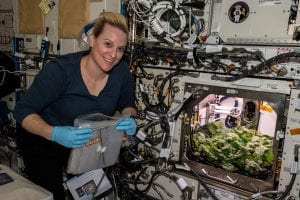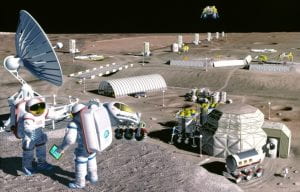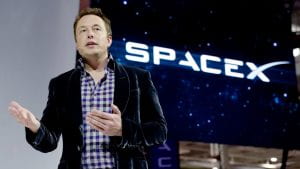“Space, the final frontier.” These famous words echo in the back of every Star Trek fan’s mind. A lot of us imagined fancy rocket ships soaring through space, exploring mystery planets, and meeting exotic alien life forms as a child. Some of us even grew up on space-based sci-fi media such as Star Wars and E.T., which epitomize our deep desire and wildest imagination to explore space and alien life. Soon, this exact fantasy may be achievable for those still dreaming of deep space exploration.

On June 29, Virgin Galactic successfully launched the world’s first commercial space flight with paying customers on board its spacecraft called the VMS Eve. As a company first founded by a British billionaire named Richard Branson, Virgin Galactic had plans to launch commercial flights into low orbit long before this recent launch. All the way back in 2021, Richard Branson took flight into low orbit space as part of a test flight for a launch vehicle that the company planned to use for future flights. All these experiments, tests, and attempts at perfecting space travel have taken more than 20 years for Virgin Galactic, but mark an important hallmark in mankind’s next step into their journey into space. In all, Virgin Galactic’s success in this launch shows that our time in space may not be too far away.
As an unrestricted and untouched region, nobody still knows the exact value which space holds. According to a report by CNBC, space was valued at a whopping $424 billion back in 2020 and is projected to over $1 trillion in industry revenue by the year 2040. Moreover, the Space Foundation reports that this equates to nearly 70% in growth since 2010, marking commercial space as one of the fastest-growing industries in the world at the moment. Deloitte reports that 2022 was a record-breaking year, as it continued the commercial space’s unstoppable momentum to success. In that year alone there were 186 launches, which were 41 more than 2021, marking another milestone in the commercial space industry.

Space offers untapped economic benefits incomparable to that of anything in human history. First off, it will become an entirely new sector of the economy, opening up new job positions for millions of workers to be stationed at launch sites, space stations, factory lines, and more. Alternatively, more people are interested in how space can open up opportunities for major sectors such as satellite communications, research and development, mining, aerospace, and military products. In recent years, consumers worldwide have been in high demand for space-related products, such as internet access. Experts believe that by the end of the year, there will be 5,000 of these internet-providing satellites to occupy our low orbit space for millions of users and expect 40,000 to 50,000 satellites by the end of 2030 providing internet access to up to 10 million users. Industries where dangerous experiments with untested chemicals and materials must be conducted, such as the food and nutrition, and pharmaceuticals sectors, could improve their operations with more freedom to test their products in a remote environment. Furthermore, space mining advancements in space could provide new resources for various applications. Helium-3 is one such example, as it is an abundant resource on the moon but extremely rare here on Earth. This element has the potential to serve as an alternative power source for mankind for centuries as it generates incredible amounts of energy via nuclear fusion.

Commercial space is the next revolutionary marketplace. Countries, entrepreneurs, companies, and investors are constantly searching for new ways to improve their services, lower costs, and invent “the next big thing.”. As eager as their ambitions are, space is not such a welcoming and accessible field to enter. For the past five decades, space was strictly dominated by government and state agencies such as NASA and the Pentagon. They gained a tremendous head start in navigating through the space sector, as they were the only ones in possession of resources and capable of sending manned missions, and satellites, and conducting research and experiments in space. Meanwhile, other actors such as private companies and entrepreneurs that are common today were yet to be involved, let alone established.
But today, this cannot be further from the truth. The space industry is being dominated by these commercial actors, which accounts for a significant increase in the space market’s valuation in a short amount of time. Through the financial support and interest from these nongovernmental personnel, the space sector saw astronomical growth and achieved more than what the state entities managed in decades with a 15% annual growth equating to $2 billion a year. And since the early 2000s and more so into the mid-2010s, private companies began to emerge, as they were spearheaded by innovative thinkers and entrepreneurs, such as Elon Musk, the founder of SpaceX, who realized the untapped resources and value in space. SpaceX is one of the world’s top spacecraft engineering companies, currently valued at $140 billion, and has boasted an impressive portfolio of successful launches since it was founded. In 2022, SpaceX raised nearly $2 billion from revenues and plans on launching 87 more rockets this year, with plans to have a sustained moon exploration project and to create a Starlink internet service expansion project as well. Blue Origin is another privately funded aerospace company, where the founder, Jeff Bezos, himself personally invests $1 billion a year so that “We go to space not to abandon our home but to protect it.” Lastly, a new company known as Relativity Space, further emphasizes how important private investment is to help commercial space expand and become our new reality. Funded by the likes of Mark Cuban, BlackRock, Y Combinator, and dozens of other top-name investors, Relativity Space is expected to be one of the leading actors in commercial space in the near future.

In addition to the introduction of private entities in the commercial space industry, a number of other factors also contribute to the rapid growth. Researchers identified multiple potential sources that accounted for the massive upsurge in commercial space interest, which narrowed down to lower launch costs as a result of advancements in related technologies and fierce competition among players. As time goes on, new technologies constantly emerge, and the same applies to the space industry. Through the introduction of reusable launch vehicles and smaller and lighter rockets requiring less materials, more efficient launches have been made possible. More specifically, the costs for heavy launches into low-Earth orbit (LEO) have gone down from $65,000 per kg to $1,500 per kg, which is a greater than 95 percent decrease. In addition, more countries, companies, and agencies are gaining launch capability, leading to intense competition in the great commercial space race. Like any industry that suffers from the effects of commoditization, the incentive to create the most appealing and enticing products for customers, these space actors are forced to compete with each other and inevitably push each other to create newer and improved products that can outperform their competitors and help them generate profit. A prominent example of the space race is between the U.S. and China, where currently, Chinese aerospace technology is nearly catching up to that of the United States. With no desire to back down from the title of the world’s leading country in space exploration, the U.S. is doing everything possible to defend its position while China is constantly challenging and looking to take over its spot.

Despite such exciting prospects, space is becoming increasingly congested and contested for all. Space debris is one of the most pressing issues. NASA has already identified and is tracking 500,000 individual particles alongside 2,000 or so satellites hovering in and around our atmosphere and expect the numbers to only increase and impede future launches. Space debris can move up to speeds up to 27,000 km per hour. It can cause cataclysmic damage to space stations, satellites, and space shuttles carrying astronauts, especially those planning future launches. But like any uncharted territory, humankind needs to proceed with caution. Without proper guidelines on how we should navigate space beside the Artemis Accords, there is increasing uncertainty and fear regarding how this new industry needs to be managed. Excessive military exercises, deadly weapons, unsanctioned launches, and reckless actions from dangerous actors can bring about unwanted consequences for all. We, the human race, have a horrible track record of prioritizing financial profit with no regard for the safety, sustainability, and security of the environment around us. Space is another chance for us to expand and advance our civilization, but we need to be mindful of how our actions can cause harm if we are too blinded by our goals.
10 suggestions for further reading:
- Space Sectors
- Five Fifty: The future of the space economy
- Interest grows for human spaceflight in Europe
- The Commercial Space Age Is Here
- Why Big Business Is Making a Giant Leap into Space
- Companies are commercializing outer space. Do government programs still matter?
- As private satellites increase in number, what are the risks of the commercialization of space?
- Blue Origin looks to expand beyond US with international launch site
- A Course for the Commercial Space Age
- Commercial Space Travel Is Closer Than Ever